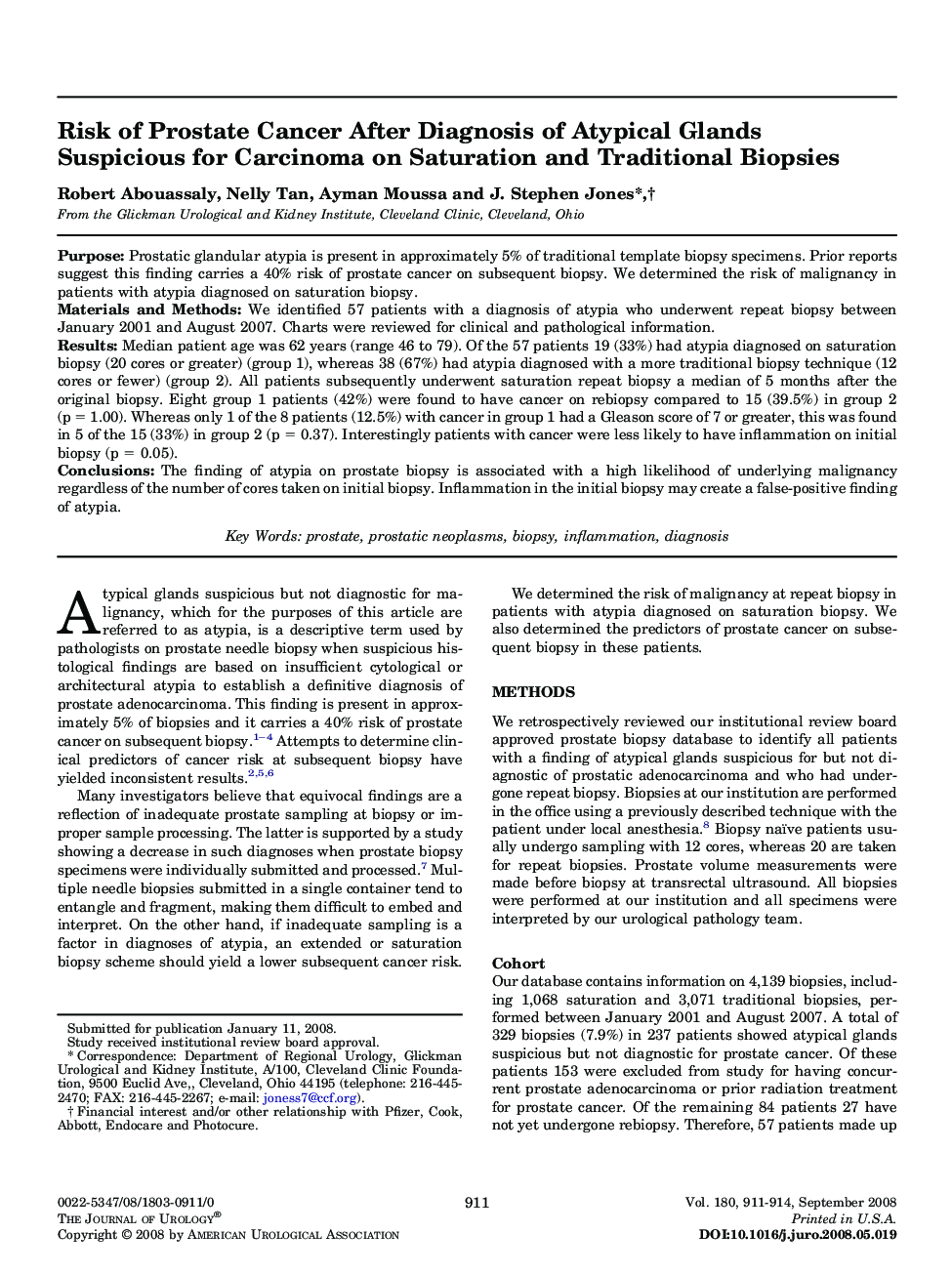| Article ID | Journal | Published Year | Pages | File Type |
|---|---|---|---|---|
| 3872815 | The Journal of Urology | 2008 | 4 Pages |
PurposeProstatic glandular atypia is present in approximately 5% of traditional template biopsy specimens. Prior reports suggest this finding carries a 40% risk of prostate cancer on subsequent biopsy. We determined the risk of malignancy in patients with atypia diagnosed on saturation biopsy.Materials and MethodsWe identified 57 patients with a diagnosis of atypia who underwent repeat biopsy between January 2001 and August 2007. Charts were reviewed for clinical and pathological information.ResultsMedian patient age was 62 years (range 46 to 79). Of the 57 patients 19 (33%) had atypia diagnosed on saturation biopsy (20 cores or greater) (group 1), whereas 38 (67%) had atypia diagnosed with a more traditional biopsy technique (12 cores or fewer) (group 2). All patients subsequently underwent saturation repeat biopsy a median of 5 months after the original biopsy. Eight group 1 patients (42%) were found to have cancer on rebiopsy compared to 15 (39.5%) in group 2 (p = 1.00). Whereas only 1 of the 8 patients (12.5%) with cancer in group 1 had a Gleason score of 7 or greater, this was found in 5 of the 15 (33%) in group 2 (p = 0.37). Interestingly patients with cancer were less likely to have inflammation on initial biopsy (p = 0.05).ConclusionsThe finding of atypia on prostate biopsy is associated with a high likelihood of underlying malignancy regardless of the number of cores taken on initial biopsy. Inflammation in the initial biopsy may create a false-positive finding of atypia.
